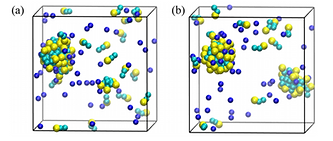
Quadratic Number Fields
Summation formulas for Hurwitz class numbers and other mock modular coefficients, with Nikolaos Diamantis, Rajat Gupta, Larry Rolen, and Kalani Thalagoda. Submitted. Link.
modular framework for generalized Hurwitz class numbers II, with Andreas Mono. Submitted. Link.
A modular framework for generalized Hurwitz class numbers I, with Andreas Mono. Submitted. Link.
Imaginary quadratic fields with l-torsion-free class groups and specified split primes, with Martin Raum and Olav Richter. Int. Math. Res. Not. 16 (2024). Link.
Imaginary quadratic fields with l-torsion-free class groups and specified split primes, with Martin Raum and Olav Richter. Int. Math. Res. Not. 16 (2024).
Congruences of Hurwitz class numbers on square classes (with Martin Raum and Olav Richter). Adv. in Math. 409 Part B (2022) 108663. Link.
Non-holomorphic Ramanujan-type congruences for Hurwitz class numbers (with Martin Raum and Olav Richter). Proc. Natl. Acad. Sci. USA (PNAS), 117 (2020), no. 36, 21953-21961. Link.
Class number divisibility for imaginary quadratic fields. Research in Number Theory, Res. Number Theory 6 (2020), no. 1, Paper No. 13. Link.
Indivisibility of class numbers of imaginary quadratic fields. Res. Math. Sci. 4 20 (2017). Link.
Integer Partitions

Applications in the sciences
Theory for chemical equilibrium in small systems: General results and examination of micelle self-assembly (with Robert Schneider, Lara Patel, Xiaokun Zhang, and James Kindt). Submitted.
Extracting aggregation free energies of mixed clusters from simulations of small systems (with James Kindt, Lara Patel, Robert Schneider, Xiaokun Zhang). J. Chem. Theor. Comp. 13, p. 5195-5206 (2017). Link.
Scarcity of partition congruences on semiprime progressions, with Scott Ahlgren. Accepted by The Ramanujan Journal. Link.
\
Theta-type congruences for colored partitions (with Alex Caione, Jack Chen, Maddie Diluia, Oscar Gonzalez, Jamie Su). J. of Number Theory 253, (2023) 317-336 Link.
Scarcity of congruences for the partition function (with Scott Ahlgren and Martin Raum). Amer. J. of Math. 145 (5), 1509-1548, 2023. Link.
Partitions with large Dyson Rank (with Colin Albert, Robert Dicks, Irfan Demetoglu, John H. Smith, Jasmine Wang). JRMS 38 No 1. (2023) 15-21 Link.
Code by John H. Smith and Jasmine Wang with Theorem 1 examples.
On the number of parts of integer partitions lying in given residue classes (with Michael Mertens). Annals of Combinatorics 21 (2017), p. 507-517. Link.
The number of parts in certain residue classes of integer partitions (with Michael Mertens). Research in Number Theory 1 (2015). Link.
Multiplicative Properties of the Number of k-Regular Partitions (with Christine Bessenrodt). Annals of Combinatorics 20 (2016), p. 231-250. Link.

Modular forms and L-functions
Holomorphic projection for sesquiharmonic Maass forms, with Michael Allen and Vaishavi Sharma. The Ramanujan Journal 66 No 4. (2025). Link.
A zero density estimate and fractional imaginary parts of zeros for GL_2 L-functions (with Di Liu, Jesse Thorner, and Alexandru Zaharescu). Math. Proc. Camb. Phil. Soc. (2022), 1-26. doi:10.1017/S0305004122000445 Link.
Bounds for special values of shifted convolution Dirichlet series. Proc. Amer. Math. Soc. 145 6 (2017). p. 2373-2381. Link.